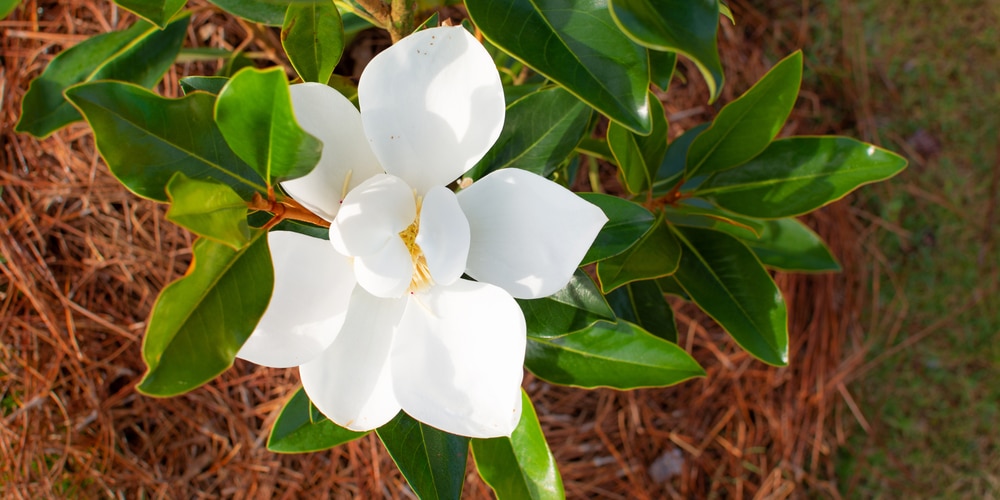Magnolia trees are stunning plants that can produce elegant white or pink blossoms and attract beautiful critters like bees or hummingbirds.
But some Magnolia trees become plagued with a black fungus on their leaves and bark. You may notice dark spores on Magnolia’s bark or black spots on the leaves.
Keep reading to find out more about Magnolia tree black fungus and how to treat it.
What Is Magnolia Tree Black Fungus?

Black fungus on your Magnolia tress is likely one of two things: sooty mold or black mildew. Sooty mold is more severe than black mildew and they require different treatments to remedy.
Learn the differences between these two fungi so you can identify the problem with your Magnolia tree.
Sooty Mold
Sooty mold is a black-hued fungal growth that stems from specific insect infestations. Magnolia trees can often suffer from Magnolia scale (Neolecanium cornuparvum) infestations.
When Magnolia scales mate, they produce a sticky substance called honeydew. Honeydew sits on the branches, bark, and leaves, creating the ideal moist environment for mold growth.
Enough sooty mold can prevent photosynthesis and lead to further problems with your Magnolia.
Black Mildew
Black mildew is less serious than sooty mold and usually doesn’t harm your tree. This type of mildew typically grows on the undersides of Magnolia leaves naturally, where the environment is dark and moist.
While the black mildew can be unattractive and concerning, it’s part of the Magnolia trees’ natural aging process. The darkened leaves will fall off eventually, so your tree will look colorful and healthy again.
Treating Sooty Mold
If you believe your Magnolia tree is afflicted with sooty mold, you should take immediate action to protect the Magnolia from permanent damage. As mentioned, the root cause of sooty mold is often Magnolia scale, so the key to eliminating sooty mold is controlling insect infestation.
Prune Infested Branches
If the black mold only seems to be in a few spots, you can likely prune these branches, eliminating the sooty mold and warding off the Magnolia scale. Clear any infested parts of the tree thoroughly, leaving no signs of mold or insects behind.
Spray Pesticides
When the black mold and Magnolia scale infect the entire tree, the best method is to spray your tree with pesticides. You can use botanical pesticides, like horticultural oil, if you want to limit the chemicals near your plants.
But you can also manage the infestation with chemical pesticides with ingredients like acephate. If you choose the pesticide treatment, you may have to apply them several times over a month to successfully get rid of the insects.
Load Up On Ladybugs
A natural and cute way to deal with a Magnolia scale infestation is with ladybugs. Ladybugs naturally eat Magnolia scale, so they can help rid your Magnolia scale infestation.
But ladybugs aren’t fierce predators, so they won’t be able to control a severe Magnolia scale infestation. If you have a mild black mold and Magnolia scale issue, ladybugs can be an easy solution.
Treating Black Mildew
Black mildew is typically not harmful, so there’s no reason to spray pesticides or take other steps to treat it. The leaves with mildew should fall off in time and won’t spread to other leaves.
If the leaves with mildew do not fall off the tree, and more and more leaves seem to darken, it could indicate your tree has a different plant disease. Call an arborist or other plant expert to determine if your tree has contracted a disease.
Final Note
To prevent Magnolia tree black fungus altogether, ensure you give your Magnolia the best care possible. They thrive in partial shade with well-draining soil. If you’re particularly worried, you can preemptively spray organic pesticides or recruit ladybugs.
